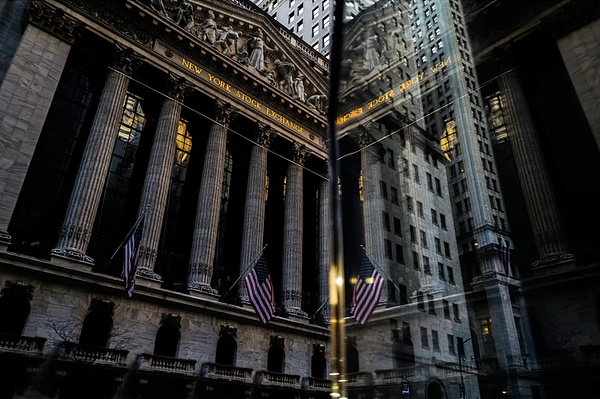No one knows when to call it quits in this market, but it certainly doesn't hurt to be aware of the risks.
The three major U.S. stock indexes collectively hit record highs twice last week. This is the first time in the past three years. this circumstance occurs. Everyone wants the party to keep going, but the stock market won't keep rising forever, and there are several factors that could bring the party to a screeching halt.
The current market environment is somewhat difficult to understand. Rising interest rates to 23-year highs, a regional banking crisis, two overseas wars, a slumping housing market and widespread expectations of a recession have failed to prevent the S&P 500 from more than doubling from its pandemic lows.
Last week, Fed Chairman Powell announced that the Fed still expected to cut interest rates three times this year, seemingly unfazed by the recent The impact of higher-than-expected inflation data. The news sent the Dow Jones Industrial Average, S&P 500 and Nasdaq Composite to their biggest weekly gains this year.

The rise in U.S. stocks has been driven by the artificial intelligence craze. The "Big Seven"-Tesla (TSLA), Nvidia (NVDA), Amazon (AMZN) , Alphabet (GOOGL), Microsoft (MSFT), Meta Platforms (META) and Apple (AAPL) - which have averaged gains of about 19% this year, have contributed a large portion of the S&P 500's gains. While these companies' businesses are strong, some strategists have argued that their gains are unsustainable.
Michael Hartnett, Chief Investment Strategist, Bank of America (Michael Hartnett) said in a recent interview with Bloomberg: "The rise of the 'Big Seven' is becoming more and more like a bubble."
Wolfe Research strategist Chris Senyek believes thatthe biggest risk to the stock market is "another late 1990s-style technology, media and the formation of the telecommunications (TMT) bubble.”
Another risk can be identified through the "Dow Theory" )see. The "Dow Theory" is a technical analysis tool that states that when one Dow Jones average—the Dow Jones Industrial Average or the Dow Jones Transportation Average—breaks out of its previous significant high, and the other Dow Jones Average also Only when it breaks through the previous important high can it be said that the real bull market has begun. The Dow Theory states that if a business is doing well and its revenue is growing, transportation stocks should also be profitable.
But this did not happen. The Dow Jones Industrial Average, which is up 4.7%, has broken its previous record, but the Dow Jones Transportation Average is still 6% below its 2021 peak.
David Rosenberg, a well-known short seller on Wall Street, wrote in an article last Friday wrote:“Investors can enjoy this wave of speculative and momentum-based gains, but this market does not yet meet the definition of a true bull market.”
Additionally, profits for S&P 500 companies are expected to rise 11% this year to $242.49, according to FactSet. There was no significant change from the January estimate of $241.17, but the S&P 500 rose 9.7% and exceeded the 5,200-point mark.
Earnings forecasts for constituent companies may be lowered in the second half of the year, weakening the stock market rising momentum. Ed Clissold, chief U.S. strategist at Ned Davis Research, recently pointed out that Wall Street’s current expectations for corporate profit growth in the first two quarters of this year are 4% to 6%, and expectations for corporate profits in the third quarter are The profit growth rate is expected to rise sharply to nearly 20%, and there may be a lot of room for downward adjustments.
Also, realistically, theFed could also crash the party . The stock market has been "perfectly priced" and has already priced in expectations that the Federal Reserve will cut interest rates multiple times this year and that the U.S. economy will be "non-stop" (that is, the economy will grow faster than expected).
Deepak Puri, Chief Investment Officer of the Americas, Deutsche Bank ) told "Barron's": "If the stock market is caught off guard a little bit, and if the economy experiences a 'soft landing' (that is, U.S. GDP growth is slightly lower than expected), it may become a catalyst for a correction in the stock market."
Of course, it is still possible that the stock market will rise further and overcome the obstacles as it did in 2023, and the above risks are also possible Neither will become reality. In this market, no one knows when to call it quits, but it certainly doesn't hurt to be aware of the risks.
 JinseFinance
JinseFinance





